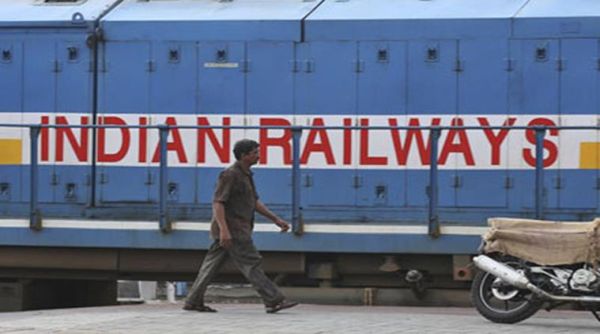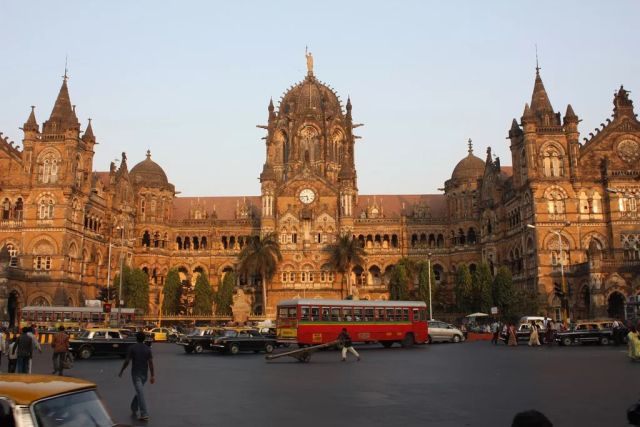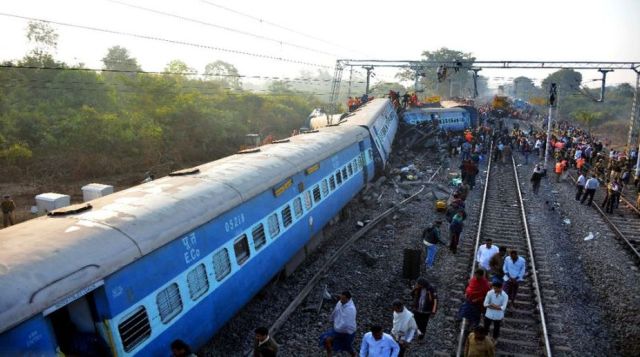
by admin | May 25, 2021 | Employment, Government Jobs, News, Politics

Rajendra Nagar railway station
Patna : Hundreds of youths on Monday staged protests at Rajendra Nagar railway station here against reduction of age limit for recruitment in the railways, leading to disruption of train services for some time, police said.
This is first time that youths staged protest at a railway station in the state capital, after reports of protests at various railway stations across Bihar over the last four days.
The protests against age limit reduction for Group D recruitments and reserving most of the seats for ITI holders in the railways came a day after thousands of unemployed youths protested at Rafiganj railway station in Aurangabad district, Athamgola station in Patna district, Muzaffarpur station and Hajipur railway station in Vaishali district.
In a bid to disperse protestors at Rajindra Nagar Terminal, the police resorted to lathicharge and beat up some of them.
The police also took into custody Chunnu Singh — the president of Bihar unit of National Students’ Union of India (NSUI) — for leading the protests.
The protesters shouted slogans against the Bharatiya Janata Party-led central government and carried placards that read “Hum pakoda nahi bechenge”, “Protest against surgical strike on railway job aspirants” and “Notify more jobs in railways”, among others.
—IANS

by admin | May 25, 2021 | Corporate, Corporate finance, Corporate Governance
 By Arun Kumar Das,
By Arun Kumar Das,
New Delhi : With the aim of providing better amenities, Railways will make a budget provision of Rs 3,400 crore for installing about 3,000 escalators and 1,000 lifts at all major urban and suburban stations across the country.
This will facilitate smooth movement of passengers, including old and physically-challenged people.
While 372 escalators are meant to cover all stations including Kandivali, Matunga, Bandra, Churchgate, Dadar, Elphinstone Road, Mahalakshmi and Jogeshwari in Mumbai, 2,589 escalators will be installed at stations on the rail network in the country.
According to a railway ministry official who did not want to be named, Large-scale installation of escalators and lifts would lead to an economy of scale, with reduction in cost. At present, an escalator costs around Rs 1 crore and a lift about Rs 40 lakh.
Railways recently revised the criteria for making urban and suburban stations eligible for installation of escalators from earnings-basis to footfalls.
Now all those stations which have 25,000 footfalls or more a year are selected for such installations. Earlier, those stations that had annual revenue ranging between Rs 8 crore and Rs 60 crore were eligible for the facility.
This time the focus of the Rail Budget is on safety and passenger amenities so it was decided to extend the facility to all major urban and suburban stations, the official said. The proposal of earmarking the provision for the escalators in Budget for 2018-19 was being finalised, he said.
The Rail Budget, merged with the main Budget, will be unveiled by Finance Minister Arun Jaitley in Parliament on February 1.
(Arun Kumar Das is a senior Delhi-based freelance journalist. He can be contacted at akdas2005@gmail.com)
—IANS

by admin | May 25, 2021 | Corporate, Corporate Governance, News, Politics

CSTM
By Anand Singh,
Mumbai/New Delhi : The Chatrapati Shivaji Maharaj Terminus (CSTM) building would not lose its Unesco World Heritage site tag even if it shifts the Central Railway offices from there to convert the office space into a museum, Railway Ministry officials claim.
The Central Railway had , in December 2017, sought permission of the Railway Board to shift its headquarters from the iconic 129-year-old CSTM to another place in Mumbai and convert the present office into a museum.
“The proposal to convert the CSTM into a museum was received by the Railway Board 15-20 days ago,” a senior Railway Ministry official told IANS.
He also said that the Central Railway has proposed to construct its new headquarters in Mumbai’s P. D’Mello Road, which is just a few kilometres away from its current headquarters.
“They have given an estimated cost of Rs 65 crore to Rs 100 crore to construct the new building,” the official said.
While the offices of the Central Railway would be shifted from the iconic building — the most photographed structure in India after the Taj Mahal — the train operations below it will not be affected by the decision.
“The trains will continue to arrive and depart out of the 18 platforms at the CSTM, that is also a Unesco World Heritage site,” the official said.
Asked whether converting the offices into a world-class museum would not affect the tag of the Unesco World Heritage site, which it got in 2004, he replied, “We have considered Unesco World Heritage site norms. And by converting the building we would be conserving the originality of the building; thus there is no danger to the Unesco World Heritage site tag.”
“It will also help the Railways to maintain the building properly as the number of visitors will be controlled,” he said.
Asked how the idea of converting the building into the museum came about, the official replied, “Railway Minister Piyush Goyal, during his visit to the CSTM on November 27, wrote in the visitor’s book that he wanted to see the building converted into a museum.”
“The minister wanted the building to be conserved properly as a Unesco World Heritage site,” he added.
The official said that the proposal was prepared within a week’s time and was sent to the Railway Board and is awaiting clearance from the Chairman.
The official also revealed that the Central Railway’s General Manager D.K. Sharma, in his letter along with the proposal to the Railway Board, has suggested that as the work of the museum is highly specialised in nature, the project of converting the building into a museum should be done through the board’s office of Executive Director of heritage.
He has also asked the Railway Board to seek the opinion of experts for the museum work.
The official said that the work might commence from May this year which also marks the 130th anniversary of the Central Railway.
Currently, the CSTM building houses three offices, where around 400 employees of the Central Railway work.
The CSTM building was designed by British architect Frederick William Stevens. The iconic building resembles London’s St Pancras railway station and was commissioned in 1888 after the construction took 10 years.
The famous architectural landmark in the Gothic-revival style served as the headquarters of the Great Indian Peninsular Railway. The zonal railway operates from the same building since 1951.
The station was known as Victoria Terminus — VT for short — till 1996. The name of the station was then changed to Chhatrapati Shivaji Terminus in honour of the Maratha emperor Chhatrapati Shivaji.
The station was again renamed in May 2017 as the Chhatrapati Shivaji Maharaj Terminus after a resolution to change the name was passed in the Maharashtra Assembly in December 2016.
The Home Ministry officially sent a letter to the Maharashtra government denoting the name change in May 2017.
According to the Central Railway officials, every day above three million suburban commuters use the railway station.
(Anand Singh can be contacted at anand.s@ians.in )
—IANS

by admin | May 25, 2021 | News
 New Delhi : Six coaches of the New Delhi-Varanasi Manduadih Express derailed at the New Delhi Railway station. No injuries were reported.
New Delhi : Six coaches of the New Delhi-Varanasi Manduadih Express derailed at the New Delhi Railway station. No injuries were reported.
A Northern Railway official told IANS: “The incident took place at around 10.30 p.m. on Thursday when the train was about to depart from New Delhi.”
“The reason of the derailment is not clear yet. An inquiry has been ordered,” the official said.
Of the six coaches that derailed, one was an AC coach, three sleepers, one general and one inspection coach.
The accident occurred soon after the train started to move out of New Delhi’s platform no 12. It stopped with a sudden jerk. Some coaches were tilted. Passengers were evacuated by the railways and security officials.
All six coaches were replaced and the departure was rescheduled to 1 a.m. on Friday.
Rail traffic on the route was delayed by three hours due to the derailment.
In 2017, over seven derailments have occurred in Delhi region, which is one of the busiest sections of the Indian Railways. These included two Rajdhani Express.
On September 14, the guard coach of the Jammu Rajdhani Express derailed on arrival on Thursday at the New Delhi Railway Station at 6.20 a.m. No casualties were reported.
On September 7, the engine and power car of the Ranchi Rajdhani Express, which was on its way to Delhi, had derailed at the Shivaji Bridge minutes before it entered the station.
—IANS

by admin | May 25, 2021 | Corporate, Corporate Governance, News, Politics
 Mumbai : The Central Railway is on way to install energy-saving LED lights at all its 438 stations by March 2018, and exploit solar and wind power in a big way to cut on electricity bills, an official said here on Saturday.
Mumbai : The Central Railway is on way to install energy-saving LED lights at all its 438 stations by March 2018, and exploit solar and wind power in a big way to cut on electricity bills, an official said here on Saturday.
The CR and Energy Efficiency Services Ltd have signed an agreement wherein the latter will invest Rs 30 crore on the project, CR Spokesperson Sunil Udasi said.
While 250 stations have already switched over from the conventional to LED lighting, the remaining 188 will be provided LED lights by March next, he added.
As for EESL’s investments, the CR will repay it in instalments from savings accruing from lesser energy bills and retaining a part of the amount in five years, making it a win-win situation for both organisations.
The EESL will replace defective fittings and equipment, due to which annual energy savings are estimated to be 1.4 crore units, saving Rs 13.14 crore in the process.
Prioritising energy conservation and reducing energy bills, besides adopting green sources of energy, the CR has already installed 28 solar power generation plants with a total capacity of 924 kWp.
Ten plants are in Mumbai, including at Matunga workshop, nine in Solapur, and three each in Pune, Nagpur, and Bhusawal in Maharashtra.
Additionally, wind-cum-solar energy plants have been set up at eight locations with a total capacity of 44 kWp.
Independent solar plants have come up at several small stations, level crossings and street lights at 953 locations with a total capacity of 49 kWp.
The plants at Sanpada’s EMU POH Shop and Matunga Workshop, both in Mumbai, have a capacity of 1,000 kWp each and are in various stages of implementation.
“Once completed, they are expected to generate around 25 lakh units per annum. Additionally, a total of 11.335 MWp plants at 118 locations of CR are expected to be completed by July 2018 in collaboration with the Railway Energy Management Company Ltd,” Udasi said.
This would generate 142 lakh units per annum and help further slash energy bills of CR considerably.
—IANS





